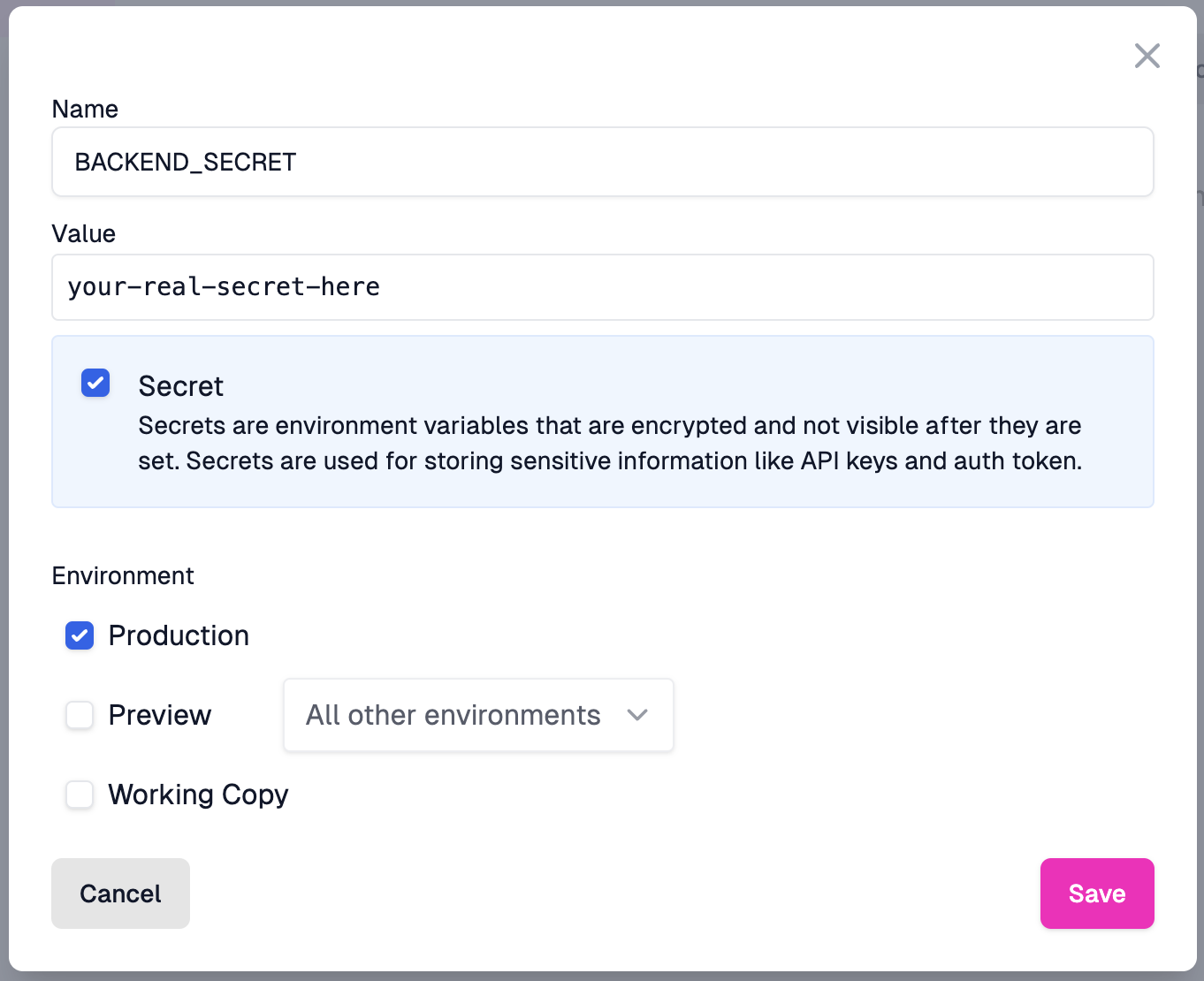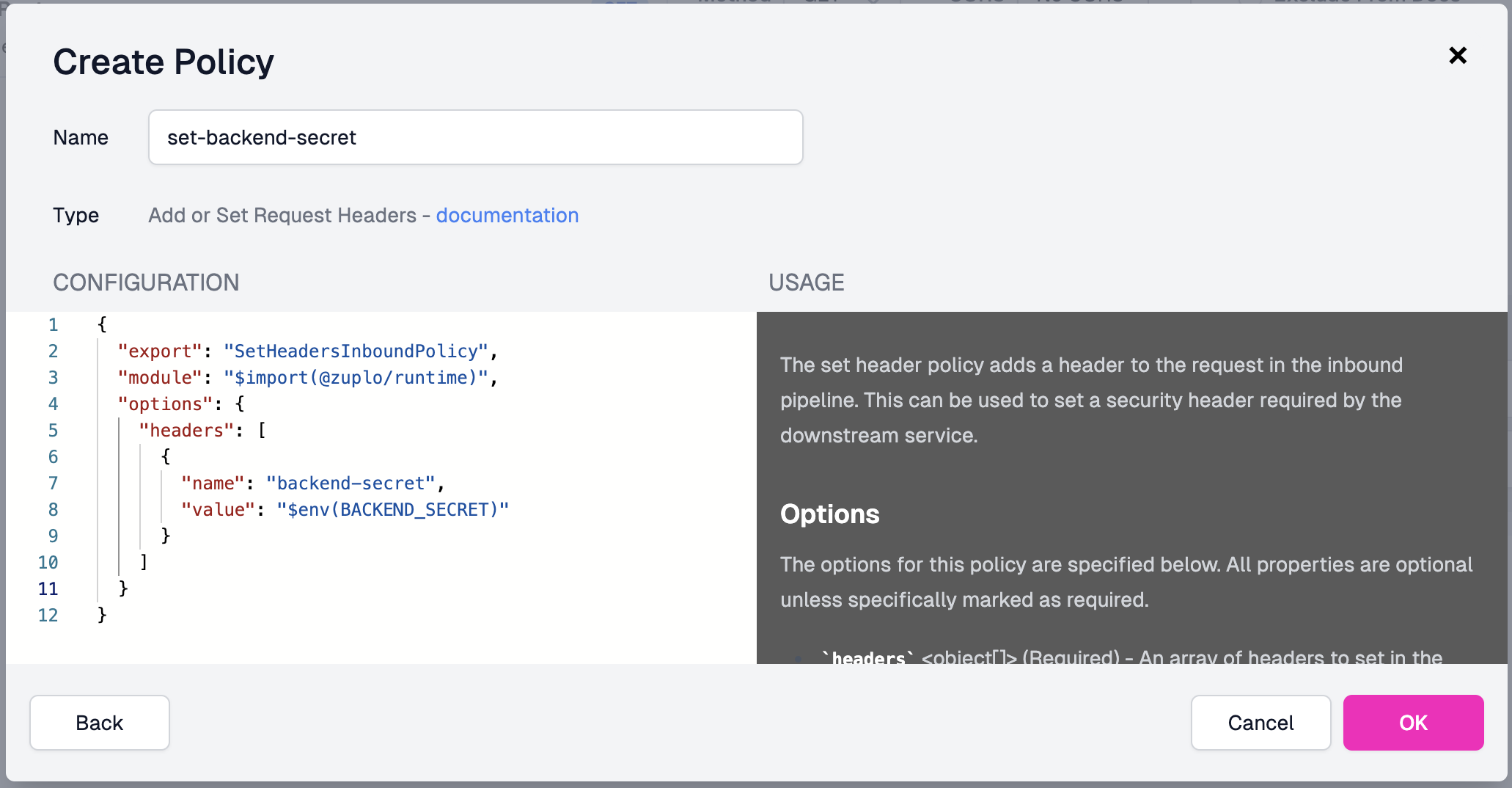Securing your Backend with a Shared Secret
When using a gateway, it's important to ensure that your backend API only accepts traffic from the gateway. This ensures that policies and security are applied to all traffic. Zuplo offers multiple options for securing your backend API. This article will show you the simplest option, which is using a shared secret via a header.
1/ Set an Environment Variable
The first step is to set an environment variable in your Zuplo project. This variable will be a secret that only your Zuplo project and your backend know. This secret will be sent as a header on every request to your backend API.
Open the Settings section of your project and select Environment Variables.
Create a new variable and name it BACKEND_SECRET. Set the value to a secure,
random value. Ensure that the value is marked as a secret.

2/ Create a Set Header Policy
The next step is to create a policy that sets the BACKEND_SECRET as a header
on the request to your backend API. This policy will be an outbound policy that
runs before the request is sent to your backend.
Navigate to the route you want to secure and add a new policy. Select the Add or Set Request Headers policy type and configure it as follows:

The configuration uses the environment variable via the $env(BACKEND_SECRET)
selector as shown below.
{
"name": "set-backend-secret",
"policyType": "set-headers-inbound",
"handler": {
"export": "SetHeadersInboundPolicy",
"module": "$import(@zuplo/runtime)",
"options": {
"headers": [
{
"name": "backend-secret",
"value": "$env(BACKEND_SECRET)"
}
]
}
}
}jsonAdd this policy to any of the routes in your API that are calling your secure backend.
3/ Verify the Secret on your Backend
Finally, you need to verify the secret on your backend. The way you implement this depends on the framework and language you are using, but the typical pattern is to use a middleware to check the header value. If the header doesn't match the secret, you would typically return a 401 Unauthorized response.
An example of this using a Node.js connect middleware is shown below.
const express = require("express");
const app = express();
app.use((req, res, next) => {
if (req.headers["backend-secret"] !== process.env.BACKEND_SECRET) {
return res.status(401).send("Unauthorized");
}
next();
});js